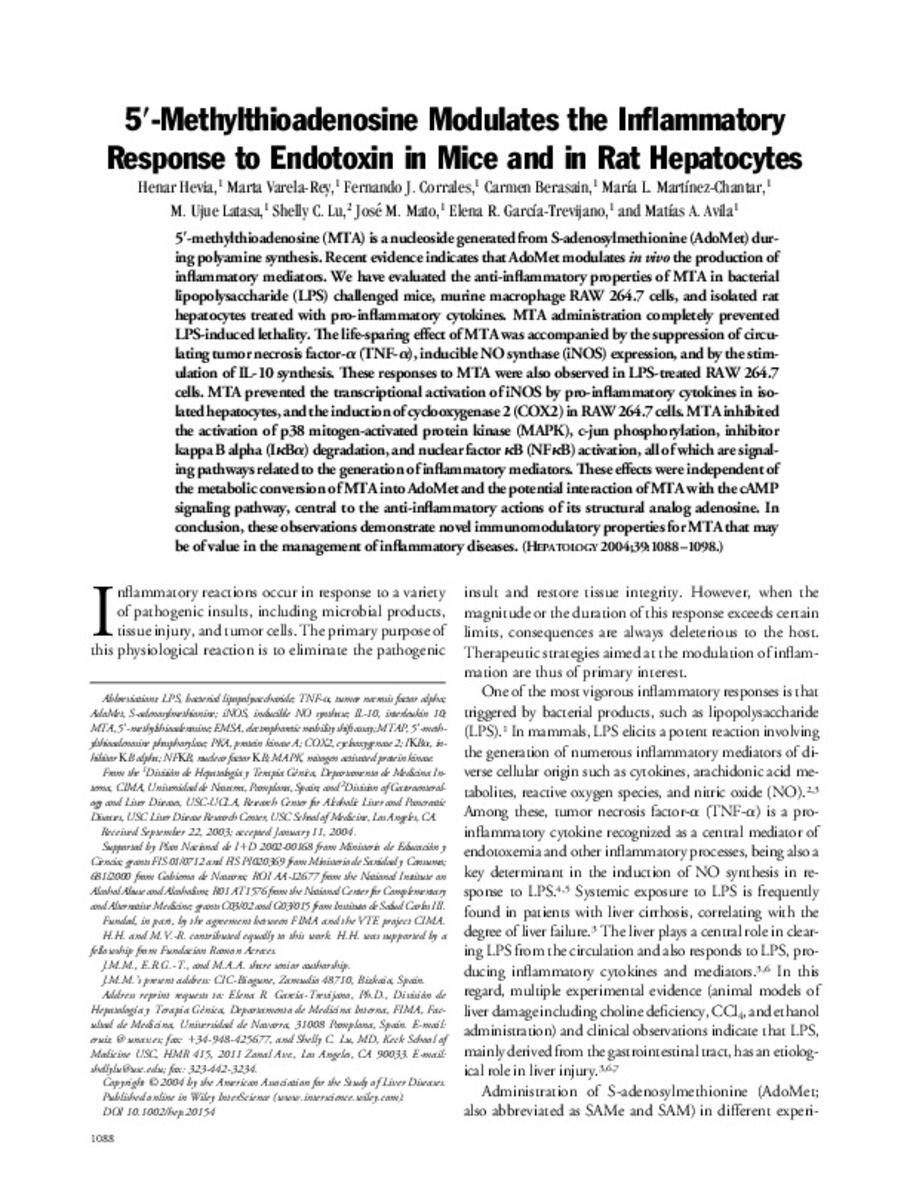Full metadata record
| DC Field | Value | Language |
|---|---|---|
| dc.creator | Kim, S.Z. (S. Z.) | - |
| dc.creator | Santamaria, E. (Enrique) | - |
| dc.creator | Jeong, T.E. (T. E.) | - |
| dc.creator | Levy, H.L. (H.L.) | - |
| dc.creator | Mato, J.M. (José María) | - |
| dc.creator | Corrales, F.J. (Fernando José) | - |
| dc.creator | Mudd, S.H. (S. Harvey) | - |
| dc.date.accessioned | 2012-04-02T07:52:06Z | - |
| dc.date.available | 2012-04-02T07:52:06Z | - |
| dc.date.issued | 2002 | - |
| dc.identifier.citation | Kim SZ, Santamaria E, Jeong TE, Levy HL, Mato JM, Corrales FJ, et al. Methionine adenosyltransferase I/III deficiency: two Korean compound heterozygous siblings with a novel mutation. J Inherit Metab Dis 2002 Dec;25(8):661-671. | es_ES |
| dc.identifier.issn | 1573-2665 | - |
| dc.identifier.uri | https://hdl.handle.net/10171/21488 | - |
| dc.description.abstract | Two Korean sisters, one detected during neonatal screening, the other ascertained at age 3 years during family screening, have persistent hypermethioninaemia without elevation of plasma tyrosine or severe liver disease. Plasma total homocysteine (tHcy) is mildly elevated, but not so markedly as to establish a diagnosis of homocystinuria due to cystathionine beta-synthase (CBS) deficiency. CBS deficiency was ruled out by the presence of slightly elevated concentrations of plasma cystathionine. Although the plasma concentrations of methionine were markedly elevated, plasma S-adenosylmethionine (AdoMet) was not. This pattern of metabolic abnormalities suggested that the patients have deficient activity of methionine adenosyltransferase (MAT) in their livers (MAT I/III deficiency). Molecular genetic studies demonstrate that each patient is a compound heterozygote for two mutations in MAT1A, the gene that encodes the catalytic subunit that composes MAT I and MAT III: a previously known inactivating G378S point mutation, and a novel W387X truncating mutation. W387X mutant protein, expressed in E. coli and purified, has about 75% of wild-type activity. Negative subunit interaction between the mutant subunits is suggested to explain the hypermethioninaemia of these sisters. They have had normal growth and development and have no mental retardation, neurological abnormalities, or other clinical problems. They are the first individuals of Korean descent proven to have MAT I/III deficiency. | es_ES |
| dc.language.iso | eng | es_ES |
| dc.publisher | Springer Verlag | es_ES |
| dc.rights | info:eu-repo/semantics/openAccess | es_ES |
| dc.subject | Methionine Adenosyltransferase/deficiency | es_ES |
| dc.subject | Mutation/genetics | es_ES |
| dc.title | Methionine adenosyltransferase I/III deficiency: two Korean compound heterozygous siblings with a novel mutation | es_ES |
| dc.type | info:eu-repo/semantics/article | es_ES |
| dc.relation.publisherversion | http://www.springerlink.com/content/p050g315v787688u/ | es_ES |
| dc.type.driver | info:eu-repo/semantics/article | es_ES |
Files in This Item:
Statistics and impact
Items in Dadun are protected by copyright, with all rights reserved, unless otherwise indicated.






